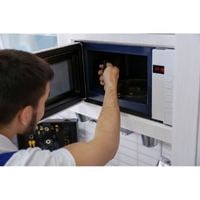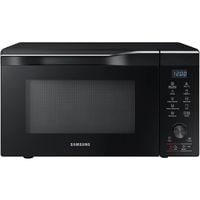Samsung oven temperature problem. As electronic devices, ovens can have issues from time to time.
You might not always be able to tell if your oven temperature is inaccurate until you’ve burned something or accidentally undercooked a meal.
Discerning whether or not the oven temperature is right may seem stressful, but there’s no need to worry. We understand this process can be challenging.
However, we are here to walk you through how one can troubleshoot oven temperature problems and resolve them in no time.
Before anything else, let us help you determine whether there is actually something wrong with your Samsung oven’s current temperature settings.
Samsung oven temperature problem

It might be hard to tell if your oven temp is inaccurate at times. Electric ovens need a new heating element if they are burned out.
Troubleshoot this issue by learning what common signs mean that you have an issue with your oven’s temperature accuracy.
Broil element does not have continuity
The broil element may have burned out. It glows red hot when it is properly heated. If the element does not glow red, it is not heating.
Often, if the element has gotten too hot and ultimately burned out, there are holes or blisters visible on it already.
Inspect the broil element for holes or blisters as a first step to figuring out what you will need to do next,
To determine if the broil element has got burnt out, test it with a multimeter by using an Ohm setting of 1000 or higher to ensure continuity.
If the broil element does not have continuity and you had found holes or blisters in it already, then replace it with a new one.
The bake element has burned out
When a heating element is hot, it should glow red. If the heating element does not glow red, that indicates that the heating element isn’t working.
Check to make sure it isn’t damaged by looking to see if there are holes or shiny spots in the wires that you can see. Test with a multimeter and replace if necessary.
Igniter is faulty
The igniter is what prepares the oven to bake by lighting the gas valve. As a sign of aging, it can take longer for the gas valve to ignite when you turn on your oven.
In older models, an oversight allowed for tiny bits of this wire to break which would then cause a bigger piece to catch fire and throw off sparks behind the oven.
Also, piezoelectric ignitors can weaken with age and may stop working correctly as a result. Because of its heat resistance, ceramic is used in new igniters instead of metal as was previously done.
Defective Oven Control Board
The oven control board and sensor work together to regulate the temperature within the oven. The sensor regulates the temperature of the oven by increasing or decreasing its resistance to electrical current in response to changes in temperature.
If the sensor resistance is incorrect – for example, if it’s giving too little resistance – then there may be problems with how even your food bakes.
On top of that, if your oven control board isn’t calibrated correctly, you risk wasting a lot of energy and time trying to figure out why your food isn’t baking correctly.
Fortunately, on some models, you can calibrate both the oven control board and sensor at lower or higher temperatures (within 35 degrees Fahrenheit) via instructions provided in your owner’s manual.
Temperature Control Thermostat issue
An oven’s temperature control thermostat does exactly as its name implies. It adjusts the heat inside the oven and cycles on and off to prevent it from getting too hot or cold.
If the thermostat isn’t calibrated correctly, it might not switch on at the proper times and can end up making your food either undercooked or overcooked.
This type of thermostat is very difficult to test because of how intricate it is for an entrepreneurial baker to really know if their own recipe book is correct all by themselves.
Problem with Temperature Sensor
In conjunction with the oven control board, the oven sensor regulates the temperature. As the oven temperature varies, the sensor adjusts its resistance to electrical current.
As the temperature in the oven rises, so does resistance and so do you feel hot – because that’s how heat works.
Now, if it’s variable resistance creating all this hot feeling with no pattern, then things might get just a bit too hot for your liking.
Luckily, our engineers were thoughtful enough to include a sensor that will help regulate any unwanted tensions that might occur.
If things start getting a little too warm for your liking then you can always recalibrate your device and by recalibrate I mean lower down those temperatures.
Convection Motor isn’t working
In a convection oven, a powered fan inside the unit circulates the air to evenly distribute heat. If the fan has stopped working, the oven won’t bake food correctly.
Turning the fan by hand should indicate whether its bearings are worn (if you cannot turn it easily). As long as you can turn it by hand, replace its bearings; if not, replace the entire motor instead.
Before replacing either part, however, test both it and the old part for continuity with a multimeter. Replace both if one does not have it or if neither does.
Replace Convection Element
In a convection oven, there are two primary heating elements: the fan which circulates air inside the oven, and the heating element which is responsible for creating hot spots in certain areas of your oven.
These heated areas are called hot spots. If your fan fails to turn on because it’s burned out, then nothing will happen to the air inside your oven except that it will simply circulate around.
In an electric convection oven with a failed fan, you shouldn’t be able to set anything on fire by
having it pre-heated without anything in it since all of this pre-heating would basically result in
doing is building up heat throughout the empty space of your oven and wouldn’t actually have any effect on your food or baking at all.
To determine if your convection element (the primary one) is no longer working, use a multimeter to test for continuity. If there isn’t any continuity then you’re good to replace the element.
Related Guides
